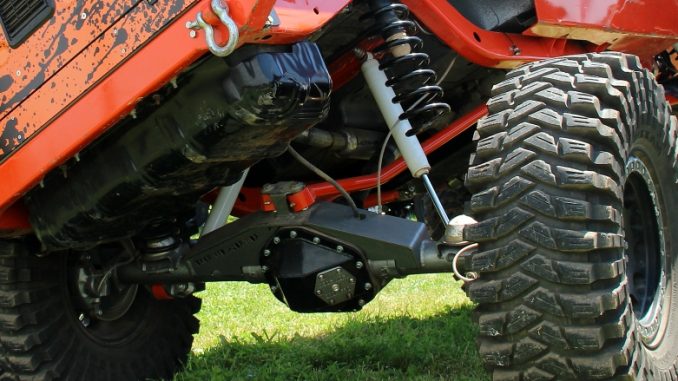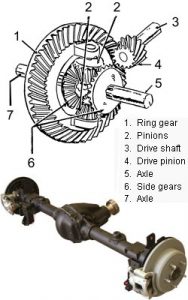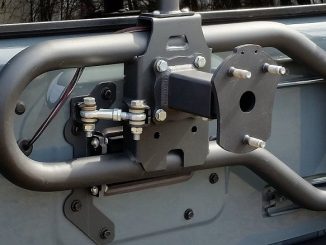
This page is a Differential Gear Ratio Chart for comparing tire size to axle gear ratio and the combined effect on power and fuel economy.
About this Engine RPM / Tire Size chart:
 The following chart of Tire sizes and axle gear ratios are meant to give a general idea of the relationship between the differential gear ratio and the tire size and what effect the ratio has on power output and fuel economy. The chart is based on RPM levels at 65 mph (105 kph) and a drive train running at a 1:1 gearing ratio, meaning the transmission and transfer case are passing power straight through at a one to one ratio without reducing or overdriving the engines rotations per minute before it reaches the differential. It is also worth noting that a manual transmission will be the most efficient at transferring power through to the axles and that an automatic transmission will have some inherent slippage without a locking torque converter. Also with an overdrive transmission, your engine RPM will be approximately 20 to 30% less than shown here depending on the overdrive ratio.
The following chart of Tire sizes and axle gear ratios are meant to give a general idea of the relationship between the differential gear ratio and the tire size and what effect the ratio has on power output and fuel economy. The chart is based on RPM levels at 65 mph (105 kph) and a drive train running at a 1:1 gearing ratio, meaning the transmission and transfer case are passing power straight through at a one to one ratio without reducing or overdriving the engines rotations per minute before it reaches the differential. It is also worth noting that a manual transmission will be the most efficient at transferring power through to the axles and that an automatic transmission will have some inherent slippage without a locking torque converter. Also with an overdrive transmission, your engine RPM will be approximately 20 to 30% less than shown here depending on the overdrive ratio.
| Good Fuel Economy but less power, good for flat highway driving | |
| Best Overall Performance, good for daily driving | |
| Highest for Power and Towing but reduced fuel economy, higher engine RPM |
| Tire Size | DIFFERENTIAL GEAR RATIO 2.94 – 4.27 | |||||||||
| Tire Size | DIFFERENTIAL GEAR RATIO 4.27 – 5.71 | ||||||





I have an 1986 Jeep Comanche2.5L I4 with % speed manual Transmission and a 4.11. I only get 14 to 16 mpg at 55mph and an rpm of 2600 at 60 mph my rpm is 2900. what would be the best thing to do to get better mileage. The window sheet says I should get between 22 to 26 mpg.